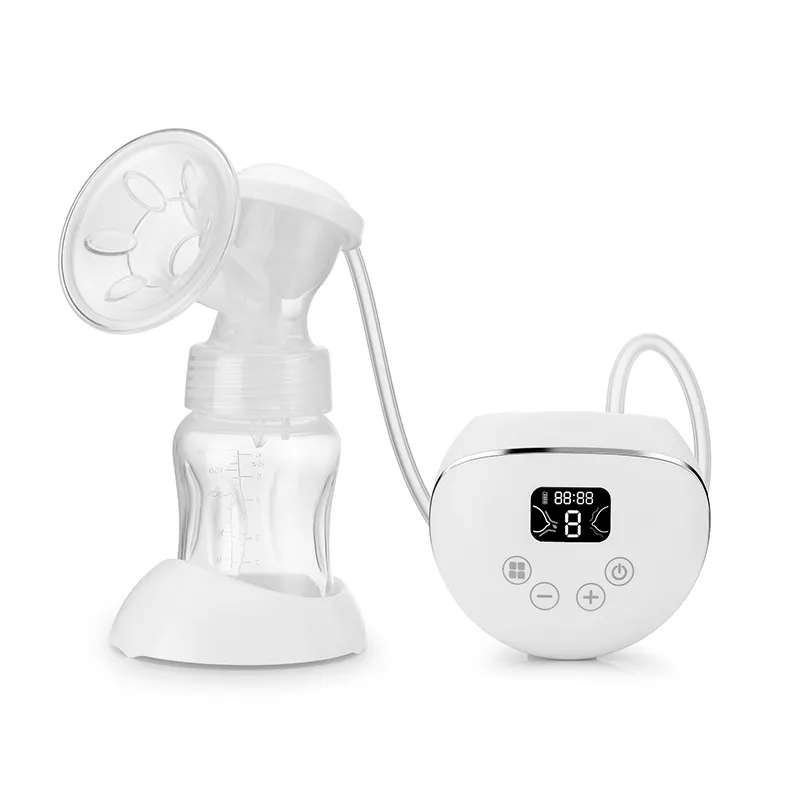The Importance of Breast Pumps for Modern Mothers
2024-09-13
Breastfeeding is a natural and nourishing way for mothers to provide essential nutrients to their newborns, but it’s not always convenient or possible for every mother to nurse directly. This is where breast pumps come in, offering a practical and effective solution for moms to express milk and continue providing breast milk even when they can’t be physically present for feeding.

In this blog, we'll explore the importance of breast pumps, the different types available, and how they benefit both mothers and babies.
Why Breast Pumps Matter
1. Flexibility for Working Mothers
One of the primary reasons many mothers turn to breast pumps is the flexibility they offer, especially for working moms. After maternity leave, many mothers return to work but still wish to provide breast milk to their infants. A breast pump allows them to express and store milk during breaks at work, ensuring their babies continue to receive all the benefits of breast milk even when they’re not at home.
Additionally, breast pumps give mothers the freedom to maintain their breastfeeding goals without compromising their professional commitments, bridging the gap between work life and the needs of their baby.
2. Supporting Lactation
Breast pumps are also invaluable tools for mothers who have difficulty breastfeeding directly or are trying to establish or increase their milk supply. For some new moms, especially those with premature babies or babies with latching issues, direct breastfeeding can be challenging. A breast pump helps stimulate milk production and allows mothers to continue expressing milk even if they are unable to nurse directly.
By encouraging regular milk removal from the breasts, breast pumps help prevent issues like engorgement, blocked ducts, or reduced milk supply, ensuring that the mother can continue providing milk over the long term.
3. Shared Feeding Responsibilities
Breast pumps allow other family members, such as the baby’s father or caregivers, to participate in feeding. This shared responsibility can strengthen bonding between the baby and other family members and give mothers much-needed rest or time for self-care.
Pumping and storing breast milk make it possible for babies to be fed with a bottle, offering more flexibility for families and reducing the pressure on mothers to be the sole source of nourishment for their babies.
4. Ensuring a Steady Milk Supply
For mothers who need to be away from their babies for an extended period—whether for work, medical reasons, or travel—regular pumping helps ensure that their milk supply doesn’t diminish. Since milk production operates on a supply-and-demand basis, the more often milk is removed from the breasts, the more milk is produced. By using a breast pump, mothers can maintain a steady supply and continue to produce enough milk to meet their baby's needs.
Types of Breast Pumps
Breast pumps come in several types, each designed to meet different needs. Choosing the right pump depends on factors like lifestyle, frequency of use, and personal preferences. Here are the main types of breast pumps available:
1. Manual Breast Pumps
Manual breast pumps are hand-operated devices that allow mothers to express milk manually by squeezing a handle. They are typically lightweight, portable, and easy to use. Manual pumps are best suited for mothers who need to pump occasionally or prefer a more affordable, simple option. However, they may not be ideal for frequent pumping as they require more effort and time.
2. Electric Breast Pumps
Electric breast pumps are powered by a motor, which automates the milk extraction process. These pumps are available in single or double versions, with double pumps allowing mothers to express milk from both breasts simultaneously, saving time. Electric pumps are ideal for mothers who pump frequently, such as working moms or those who need to increase milk supply.
Many electric pumps come with adjustable suction levels, customizable pumping modes, and even hands-free options for added convenience. They are more efficient than manual pumps but tend to be bulkier and more expensive.
3. Battery-Operated Breast Pumps
Battery-operated breast pumps offer a convenient, portable option for mothers on the go. These pumps are similar to electric breast pumps but are powered by batteries, making them easy to use without being tethered to an electrical outlet. They are great for travel or situations where electricity may not be readily available, though they may not be as powerful or efficient as traditional electric pumps.
4. Hospital-Grade Breast Pumps
Hospital-grade breast pumps are designed for mothers who need a powerful, efficient pump, often in cases where infants are premature or have feeding difficulties. These pumps are typically rented from hospitals or specialized suppliers and offer high suction strength to stimulate milk production and ensure efficient milk removal. They are larger and more expensive but provide the best results for mothers who need to pump frequently or exclusively.
Benefits of Breast Pumps for Babies
Breast pumps don't just benefit mothers; they are also advantageous for babies in several ways:
- Consistent Access to Breast Milk: Even when mothers are unavailable to breastfeed directly, breast pumps ensure that babies still receive the nutritional benefits of breast milk, which supports healthy growth and development.
- Feeding Flexibility: Bottled breast milk allows caregivers to feed the baby on a regular schedule, making it easier to manage feeding times, especially for babies who have specific needs or feeding issues.
- Nutritional Preservation: Breast pumps allow for milk storage, meaning mothers can freeze or refrigerate expressed milk for later use, preserving its nutrient content and ensuring the baby has access to breast milk even when it is not freshly pumped.
Conclusion
Breast pumps are a vital tool for modern mothers, offering flexibility, convenience, and support for maintaining breastfeeding. Whether it’s for working moms, mothers with lactation challenges, or those looking to share feeding responsibilities, breast pumps ensure that babies continue to receive the many health benefits of breast milk, regardless of circumstances.
By choosing the right type of breast pump based on lifestyle needs and frequency of use, mothers can take control of their breastfeeding journey and provide the best for their babies while balancing other aspects of life.


